Record Reviews
4 Reviews Found. Use search to find more reviews or follow the links in the review text.
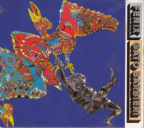 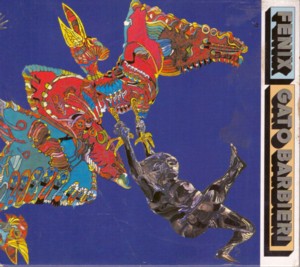 | GATO BARBIERI ~ FENIX
BMG 743218514821 (Barcode: 743218514821) ~ ARGENTINA ~ Jazz-World Fusion
Recorded: 1971 Released: 2001
This is a reissue / remaster of the 3rd album by Argentinean Jazz saxophonist / composer / bandleader Gato BarbieriFind albums by this artist, originally released on the legendary Flying DutchmanFind albums on this label label and produced by Bob ThieleFind albums by this artist, who was the label’s owner. The album was recorded by a sensational team of American Jazz musicians, which included pianist Lonnie Liston SmithFind albums by this artist, bassist Ron CarterFind albums by this artist, drummer Lenny WhiteFind albums by this artist, percussionist Gene GoldenFind albums by this artist and Brazilian percussionist Nana VasconcelosFind albums by this artist. Guitarist Joe BeckFind albums by this artist plays on one track. The album presents six tracks, one of which is an original composition by Barbieri and the rest are by Argentinean Pop / Folk composers.
By the time this album was recorded, Barbieri managed to fully develop his unique style, which perfectly combined Jazz improvisation with the spirit of South American music. He was an incredible virtuoso and his brilliant fluency was truly magical and mesmerizing. As a result, he created a long series of brilliant albums, which to this day are absolutely stunning.
Barbieri, strongly influenced by John ColtraneFind albums by this artist, developed a unique “wall of sound” effect, which presented him wailing with a terrific intensity, but supported in the background by Latin rhythms and often retaining a clear melodic contents, including his obvious affinity to the Argentinean Tango.
Overall, this is a classic example of early Jazz-World Fusion, played by the best musicians at the time and fronted by Barbieri’s intense improvisations, which remain completely relevant well over five decades later. A music in every serious Jazz record collection.
| | Updated: 09/06/2025Posted: 09/06/2025 | CD 1 Digipak Remastered Recommend To A Friend |
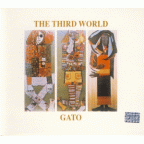  | GATO BARBIERI ~ THE THIRD WORLD
SONY 25758 (Barcode: 743212575828) ~ ARGENTINA ~ Jazz-World Fusion
Recorded: 1969 Released: 2009
This is an absolutely stunning early album by Argentinean Jazz saxophonist / composer Gato BarbieriFind albums by this artist. Barbieri left his homeland in 1962, settling first in Europe, where he worked with local as well as American musicians, who resided in Europe due to a much more open and receptive cultural climate there. Barbieri also worked closely with movie directors composing scores for several films. In 1968 he recorded finally his first album as a leader, called "In Search Of The MysteryFind albums with this title", released by the legendary ESPFind albums on this label label in NY. A year later he recorded this album, which was released on no less legendary Flying DutchmanFind albums on this label label, founded and initially owned by the great producer Bob ThieleFind albums by this artist, which released some of the most impressive, interesting and revolutionary Jazz music in the late 1960s and early 1970s by artists from many corners of the world, who could not find a label to release their music on. The lineup if extremely impressive and includes bassist Charlie HadenFind albums by this artist, pianist Lonnie Liston SmithFind albums by this artist, drummer Beaver HarrisFind albums by this artist, trombonist Roswell RuddFind albums by this artist and percussionist Richard LandrumFind albums by this artist. The music is one of the earliest examples of World Music influenced Jazz, with Barbieri incorporating his unique amalgam of South American melody lines and rhythmic approach, all originating from his native Argentina (yes, the Tango), Brazil and other sources. All these elements are presented in a Free Jazz framework, where collective improvisation is the dominant means of expression. Barbieri´s brilliant playing is the focal point of course, with his extended surges of tenor saxophone fluctuating with seemingly endless energy and passion. Obviously strongly influenced by John Coltrane, Barbieri produces a "total" wall of sound, which requires the listener to open up completely and absorb the influx of many parallel sources of sound and create his own impressions. Of course this all makes perfect sense, once properly grasped and turns out to be truly prophetic music. Barbieri´s later recordings would become somewhat less intensive and he would return to melody as well, but his brilliant playing would always be a beacon of total dedication and an example of masterly and brilliantly executed music. Absolutely stunning stuff!
| | | CD 1 Mini-Sleeve Remastered Recommend To A Friend |
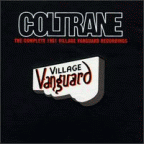  | JOHN COLTRANE ~ THE COMPLETE 1961 VILLAGE VANGUARD RECORDINGS
IMPULSE! 232 (Barcode: 011105023221) ~ USA ~ Jazz
Recorded: 1961 Released: 1997
When this music was recorded in November of 1961 I was only 10 years old and yet it changed my life forever. Living in (Socialist) Poland, my access to contemporary (at the time) jazz originating in the US was pretty limited and the only beacon of light was the daily Willis ConoverFind albums by this artist’s radio jazz program on Voice Of America, beamed from across the Iron Curtain. Millions of Eastern European listeners would risk freedom (listening to VOA was a criminal act then) to gain freedom, myself included. These broadcasts changed the life of countless people and particularly in Poland would eventually be a dominant factor in the process of forming a burgeoning and extremely fruitful local jazz scene. Many hours of my early childhood were spent with myself standing on a conductor’s podium (e sledge), in front of an imaginary orchestra playing inside the enormous radio (a pre WW II antique). Since classical music was less censored and sponsored by the Establishment, it was there for us to enjoy most of it of very high quality. I remember listening for hours at end to the annual Chopin competition, which was Poland’s most prestigious music event, getting to know his music inside out before I even knew anything about him. My Mother encouraged my “conducting” aspirations warmly, supplementing them with occasional background information. But the discovery of jazz and its strange convoluting patterns and unfamiliar rhythms was a revelation. I just couldn’t get enough of it and every new artist or piece of music was an instant bliss. By the time I was about to hear John ColtraneFind albums by this artist for the first time I was already familiar with the music of Duke EllingtonFind albums by this artist, Count BasieFind albums by this artist, Charlie ParkerFind albums by this artist and Dizzie GillespieFind albums by this artist (thanks to Mr. Conover). Conover, in contrast to many of his peers (who were stuck in be-bop or some earlier jazz sub-genre for the rest of their lives), was remarkably open-minded and understood the genius of Coltrane and his visionary contribution to the development of the Jazz Art form. He therefore featured every new Coltrane album as soon as it was released. So here I was, 10 years old, some time in early 1962, listening to the Village Vanguard sessions – an experience equivalent to a 10,000 Volts electricity shock. My life would definitely be never the same again. I hope these personal reminiscences don’t put you off too much, but I just couldn’t resist the temptation. Taking the time-travel express to now here are my comments about this music from a “45 years later” point of view. In 1961 Coltrane left AtlanticFind albums on this label (his second label, PrestigeFind albums on this label being the first) and signed a contract with Impulse!Find albums on this label, the new and ambitious jazz label run by producer Bob ThieleFind albums by this artist, where he would stay for the rest of his life. Coltrane was already following a path (mostly subconsciously) which would lead him to the edge of the known jazz explorations and beyond. His monumental Atlantic albums like Giant Steps and My Favorite Things were just a glimpse of things to come. Coltrane felt that Thiele would allow him to speed up the process of reaching the quest of musical enlightenment by allowing him total artistic freedom and supporting him all the way and he was of course right. The extensive volume of music recorded for Impulse! in the span of almost 7 years right up to his death would become the most important musical legacy of the 20th Century, so innovative and groundbreaking that it is still a mystery to many contemporary listeners and musicologists today. Coltrane’s first recording for Impulse! (in the spring of 1961) would be the Africa / Brass sessions, an ambitious project involving a large ensemble of the most gifted players on the scene (Freddie HubbardFind albums by this artist, Booker LittleFind albums by this artist, Eric DolphyFind albums by this artist and many others) – see The Complete Africa / Brass SessionsFind albums with this title album, another essential Coltrane release. These sessions introduce several new elements in Coltrane’s music, like Far-Eastern motifs, African rhythms and other ethnic influences. In November of 1961 Thiele decided to record Coltrane live, using the 4 nights booking at the NY club The Village Vanguard (where many jazz albums were recorded live) for this purpose. The booking was for a John Coltrane Quintet and it was only natural that the Quintet would include Eric Dolphy, whom Coltrane knew, respected and played with earlier. The legendary Quartet (with McCoy TynerFind albums by this artist, Jimmy GarrisonFind albums by this artist and Elvin JonesFind albums by this artist) was not entirely crystallized at the time, so Coltrane and Thiele decided to expand the line-up (on some takes) to include an oud player (Ahmed Abdul-MalikFind albums by this artist) and alternative bassist (Reggie WorkmanFind albums by this artist) and drummer (Roy HaynesFind albums by this artist). Since this music was recorded for a future release Thiele (as any produce would do) recorded several takes of each tune, some with an alternating line-up. This 4CDs Box Set includes all the music that was recorded during these four days (mind you not all the music that was played, as some of it was not recorded hence the “complete” being not entirely true) in the exact order it was recorded. This music was to be released later on two albums (Live At The Village Vanguard and The Other Village Vanguard Tapes) as well as parts of other albums (Impressions) and collections. Collected here together for the first time, this is a monumental piece of jazz history and an unforgettable musical experience. Coltrane’s circular breathing technique and his “wall of sound” approach are clearly evident here for the first time in their full glory. The comparison of the different versions of the same tunes are both fundamental and clairvoyant examples of the “one time experience” that every jazz performance essentially is. The power, the vision, the super-human strength of will of the Master and Prophet (please excuse the almost religious references) that Coltrane was, are here for us, his disciples, to discover, study, revere and bequest to future generations. This Box Set is something one has in one’s record collection for life. It is not only timeless, but also constantly evolving in parallel to one’s private (musical) evolution. Listening to it time after time (especially after a long period of abstention) will be revealing and constantly surprising. It is a superb example of great Art, which keeps alive for eternity, adopting itself to the changing cultural surroundings, and therefore being truly eternal. I can’t imagine anybody, who calls himself a music lover, not owning this music, as naive as this might sound, since I believe there is something in it for everybody. Beyond essential!
| | Updated: 26/01/2019Posted: | CD 4 Box Set Oversampling Remastered Bonus Tracks Essential Recommend To A Friend |
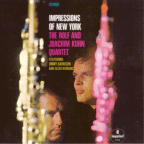 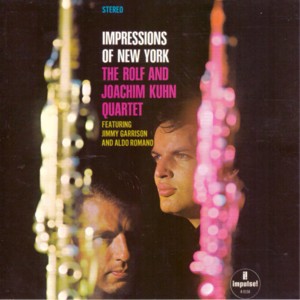 | ROLF + JOACHIM KUHN QUARTET ~ IMPRESSIONS OF NEW YORK
MPS 600753227572 (Barcode: 600753227572) ~ GERMANY ~ Free Jazz / Improvised Music
Recorded: 1967 Released: 2009
This is a reissue / remaster of the legendary album by the German Kuhn Brothers, clarinetists / composer Rolf KuhnFind albums by this artist and pianist / composer Joachim KuhnFind albums by this artist. The quartet includes also American bassist Jimmy GarrisonFind albums by this artist and Italian drummer Aldo RomanoFind albums by this artist. The album presents two tracks, corresponding to the two sides of the original LP, which are in fact four parts of a suite, which gave the album its name. All the music was co-composed by the both brothers.
Following the unification of the Kuhn Brothers in West Germany, with Joachim leaving the DDR and moving to West Germany, they were invited to perform at the legendary Newport Jazz Festival. Their performance was witnessed by the legendary producer Bob ThieleFind albums by this artist, who invited them to record this album on his iconic Impulse!Find albums on this label label. The album was recorded on July 27, 1967, just a few days following the death and funeral of John ColtraneFind albums by this artist, which the brothers attended, and which had a tremendous impact on the music on this album, considering the fact that Coltrane was the most revered American musician and an instigator of Free Jazz / Improvised Music, as well as the fact that Coltrane’s bassist played on it. This album was the first Impulse! release to feature German Jazz Musicians. The Kuhn Brothers recorded another album for Impulse! some forty-four years later, called “LifelineFind albums with this title”.
The album is an outstanding example of early European Free Jazz / Improvised Music, of the absolutely highest standard and imagination, which took the seeds of American Free Jazz of the period and took them to another plane, way more sophisticated, Artistic and imaginative. The performances are blood-chilling and absolutely unique, in many ways probably exposing the very peak of the Jazz creativity, which to be honest never managed to climb much higher than what can be heard here.
Rolf Kuhn is for me the true hero of this session, considering the fact that he was deeply rooted in American Swing and Mainstream, playing in the US for many years, and yet managed to detach himself from that tradition in such a radical way, which is way more difficult than plunging into Improvising Music straight on, like his younger brother. Obviously, the comparison of his clarinet performances herein with Coltrane’s saxophone playing is immediately a point of interest, as are the piano parts against those of Coltrane’s pianists. Rolf’s death almost two years ago (2022) was a huge personal loss for me, since we have been Friends for so many years and I truly admired his talent and wisdom.
Overall, this is one of the most pivotal Jazz albums in European Jazz, despite the fact that it is only known by relatively very few Jazz listeners. I have owned a copy since day one and listened to this album countless times in the almost sixty years since it was released, and each and every time I managed to discover something new in the music. I can only hope some more listeners will discover it one day, although admittedly it is quite difficult to find a copy.
| | Updated: 01/10/2024Posted: 08/07/2024 | CD 1 Oversampling Remastered Essential Recommend To A Friend |
|







